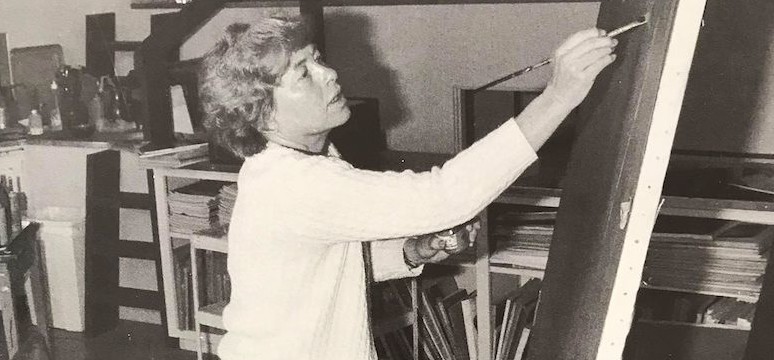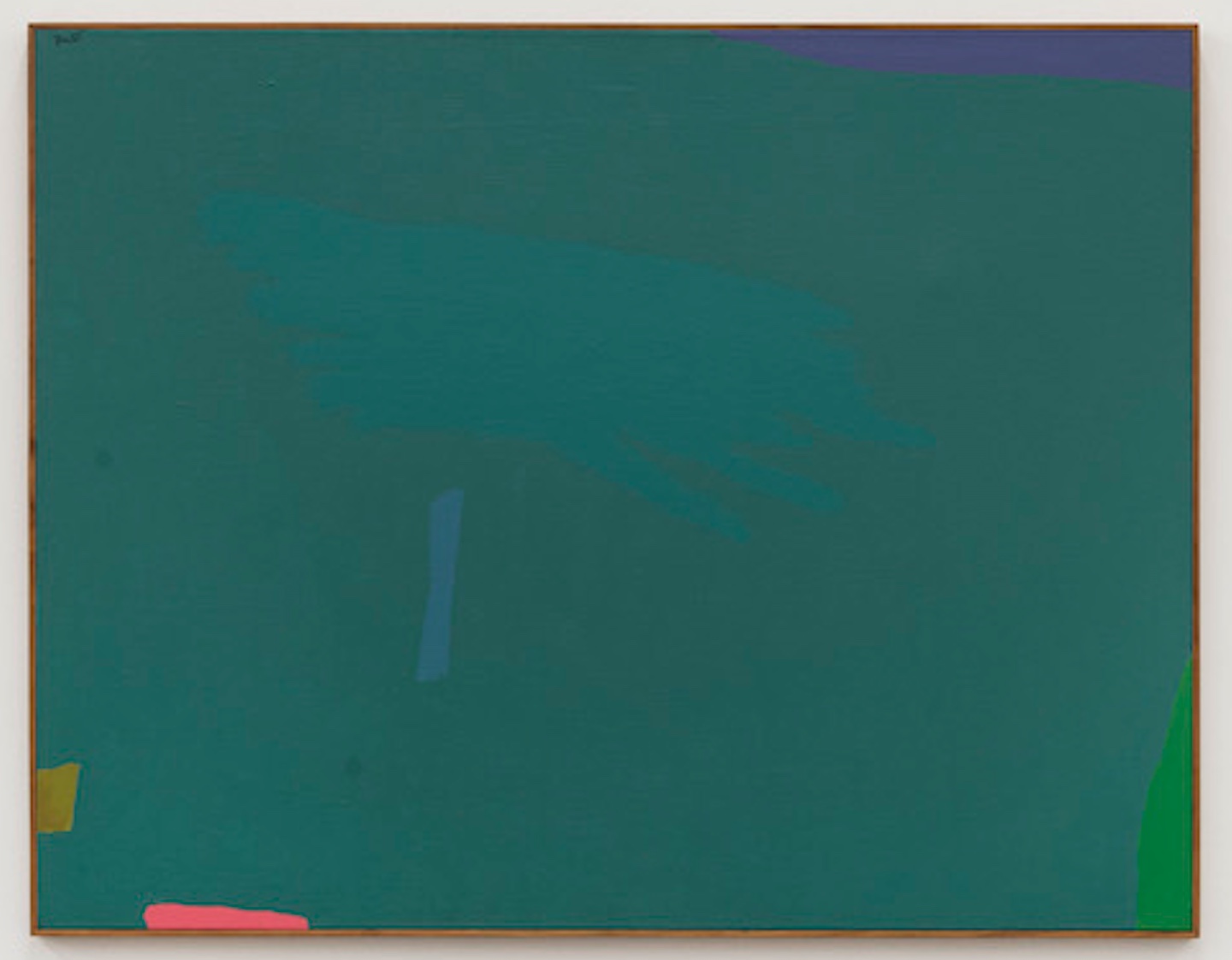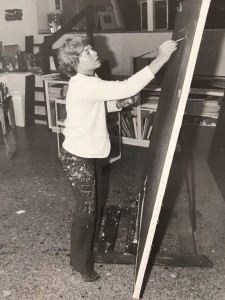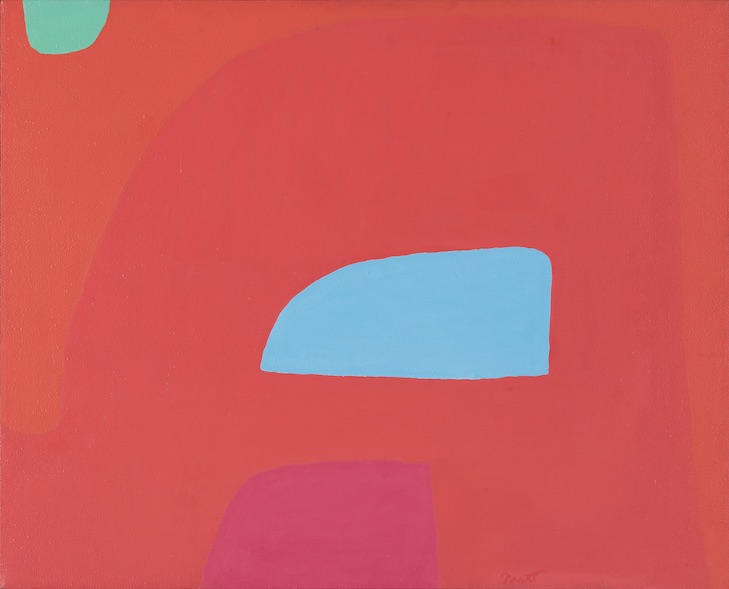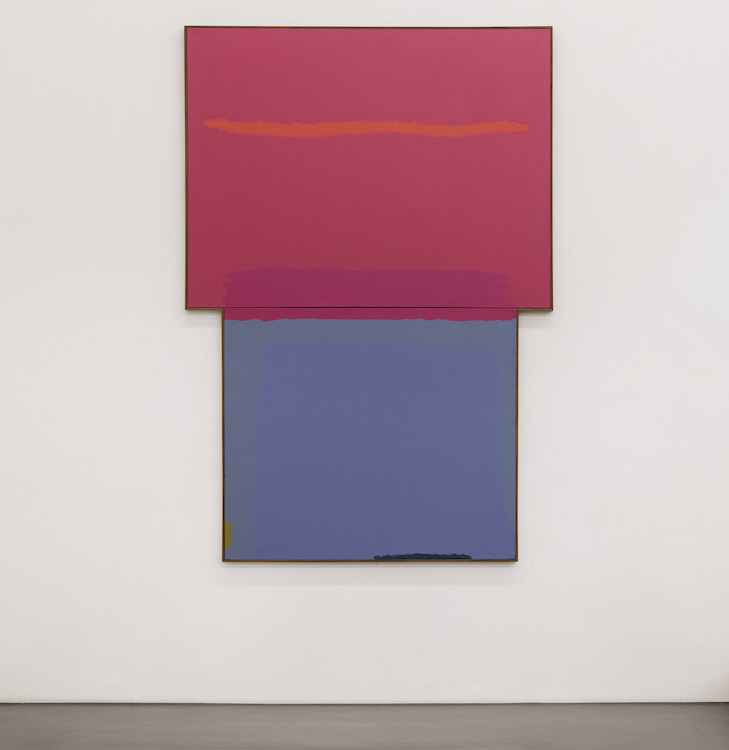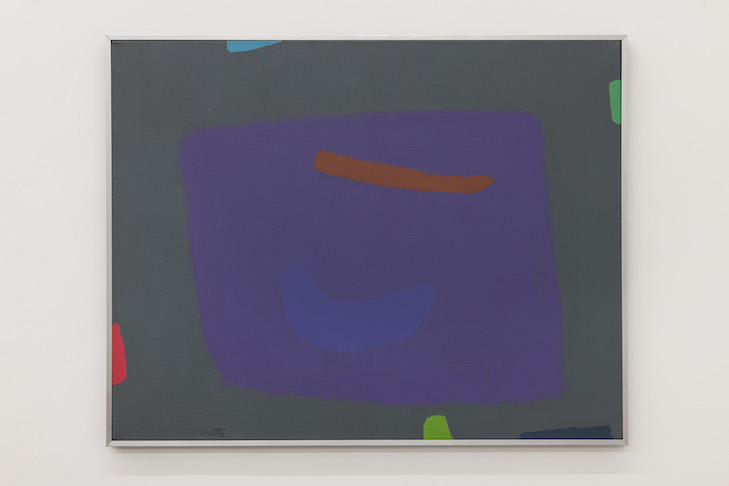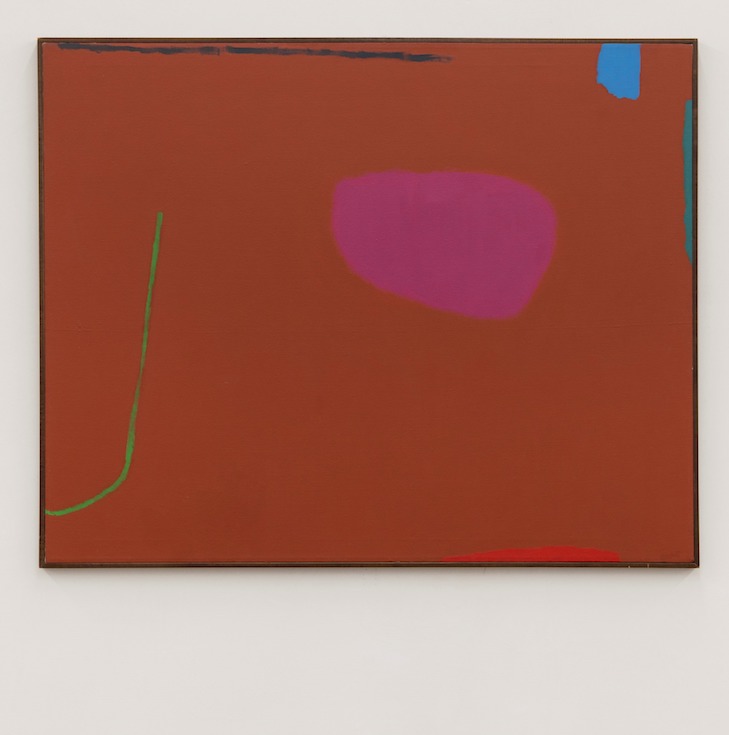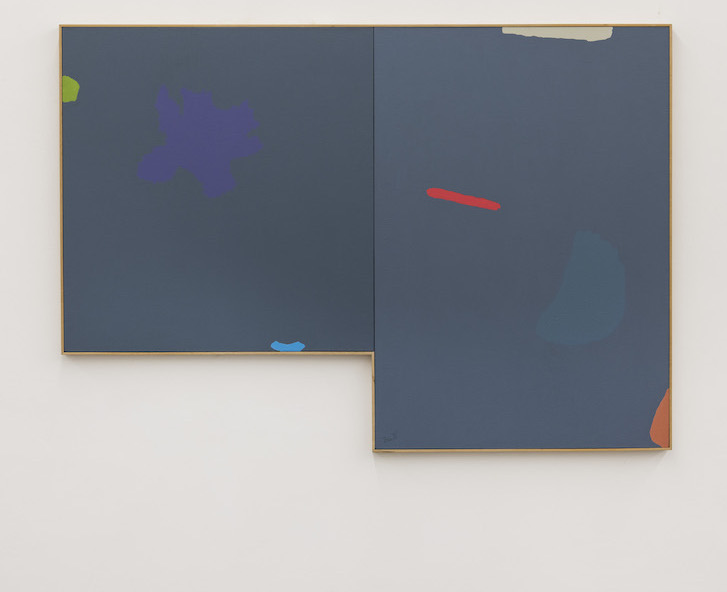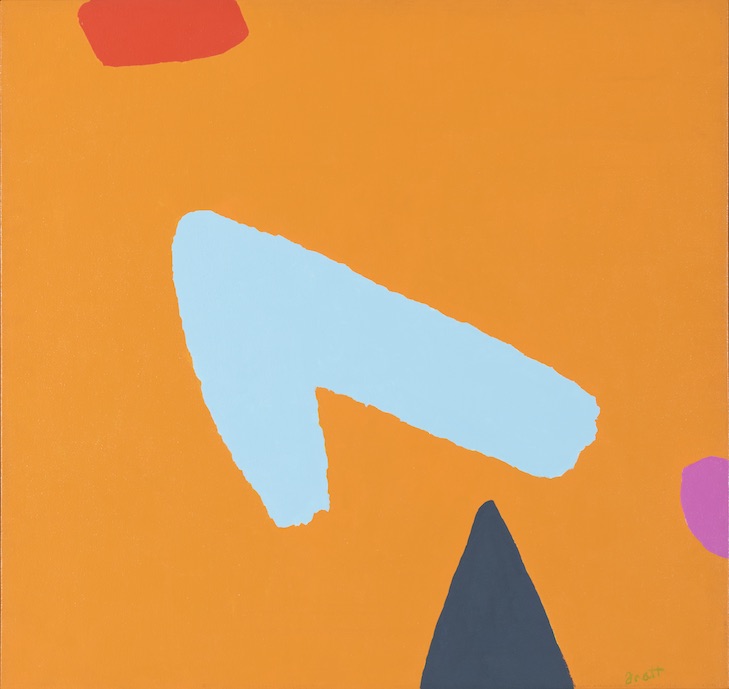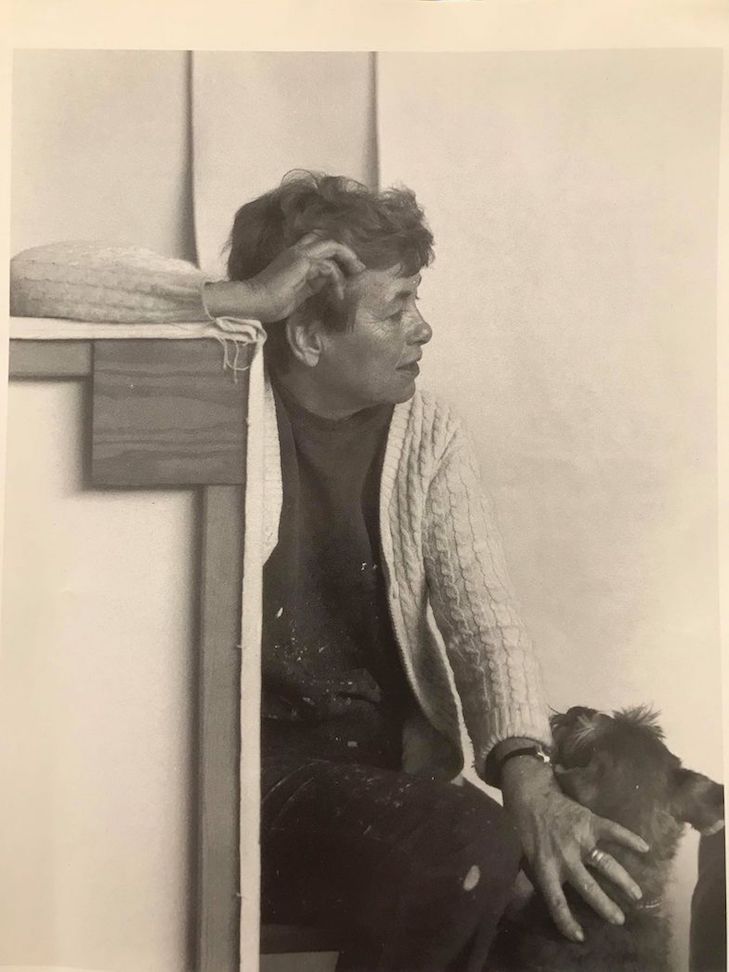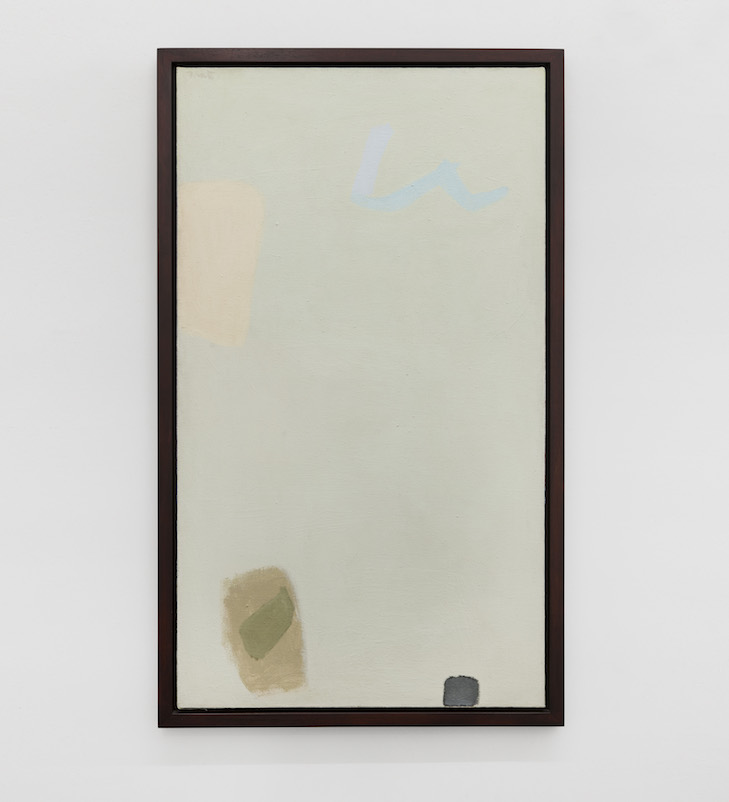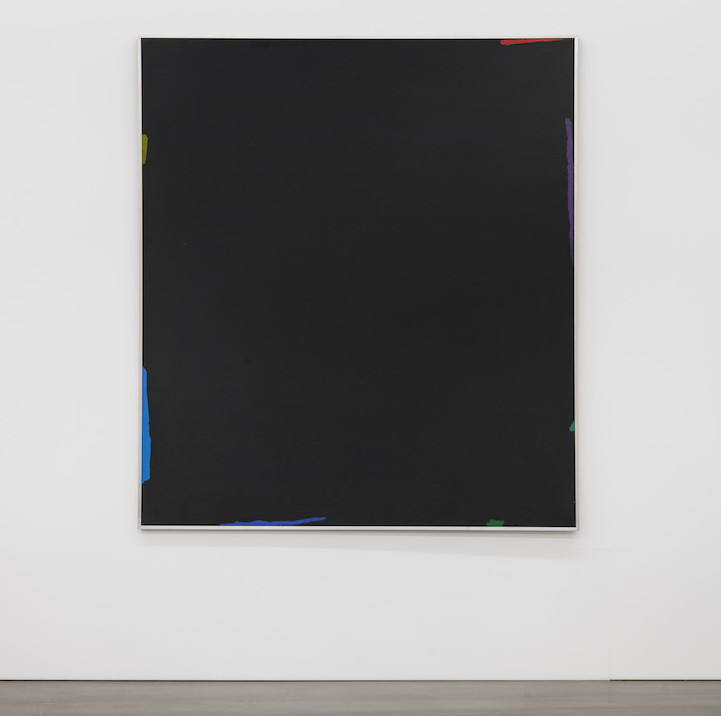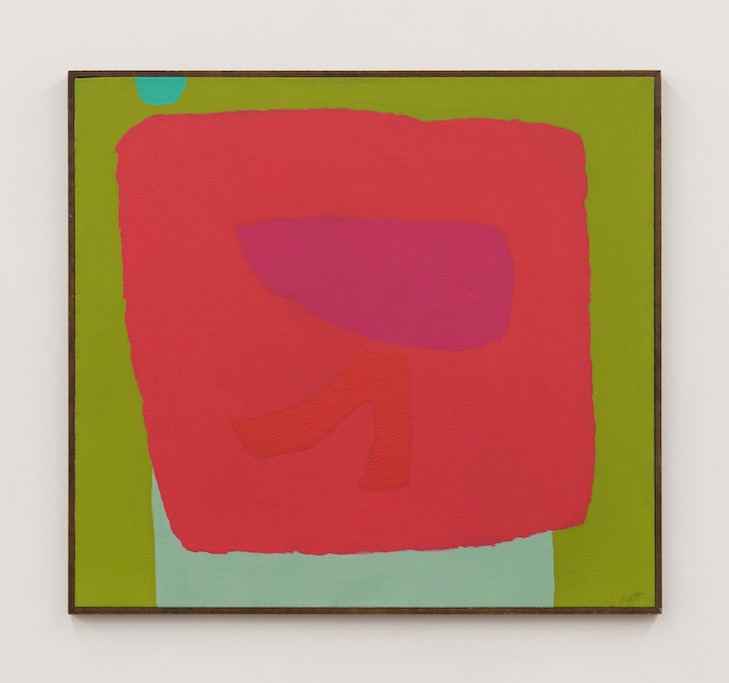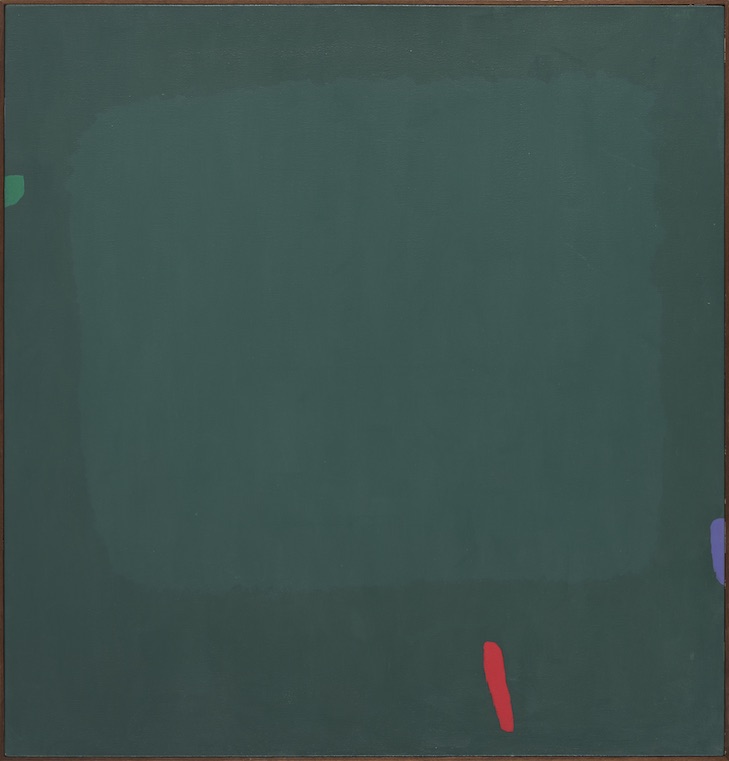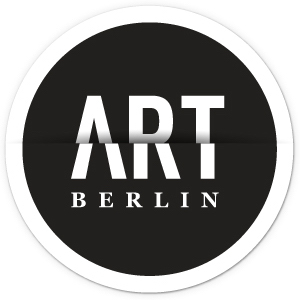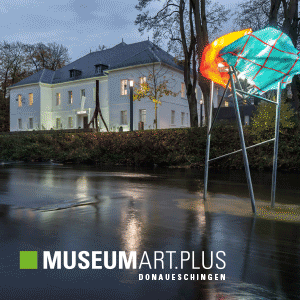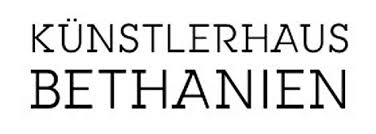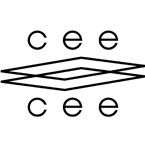ABOUT DOROTHY FRATT
But first things first. Why is Dorothy Fratt such an important artist in the field of abstract non-objective painting?
Fratt, who was born the daughter of a photographer for the Washington Post in 1923 in D.C., can be related to the Washington Color School, a group that was active in Washington in the 50s and 60s. This happened parallel to the Color Field and Abstract Expressionism Painting movement in New York. By moving to Arizona, Fratt distanced herself from the major art centers, which was from a strategic point of view for an artist in that time a bold move. She painted every day, as we now know and developed her own unique language with form and color to an unsurpassed level.
She was admired by fellow artists, critics, collectors and students for her comprehensive understanding of color and her exceptional sensitivity for the interaction of form and color.
Simone Jung, Curator Museum Art.Plus
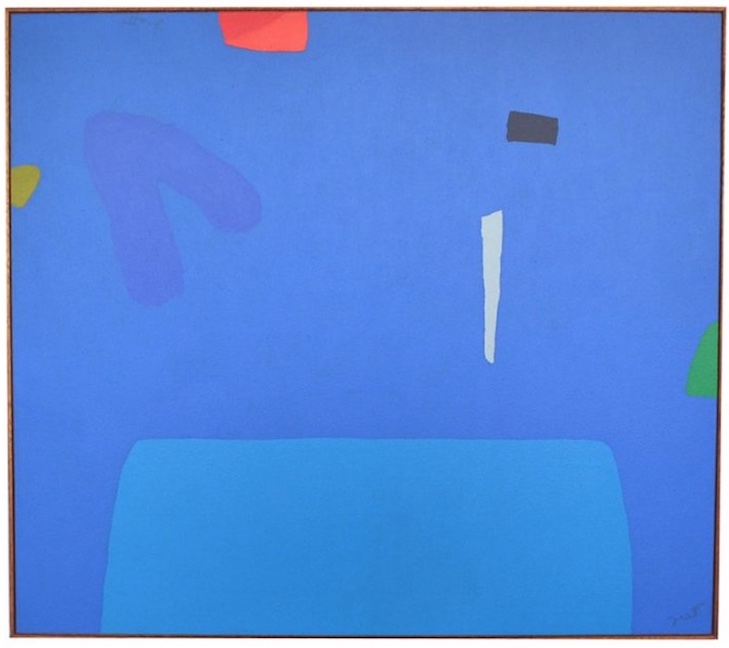
Dorothy Fratt, TRUE BLUE, 1983 acrylic on canvas 167 x 121.9 cm |Gift of Edward Jacobson Contemporary in the collection of the Phoenix Art Museum
SEARCHING FOR DOROTHY FRATT
In her canvases she performs a kind of effortless (it seems) miracle – you can get lost in and you can find yourself in her works. There is a kind of truth in them I can only describe as something that enfolds immediately inside yourself and you know intuitively it’s real, it’s honest.
When I started my research about Dorothy Fratt I was puzzled and also frustrated how little there was to find about her work as an artist and person, a fact that made me realize how spoiled we are these days with online research. Needless to say that I was intrigued when I found this comment by a certain Lilian Barker about Dorothy, under a local online obituary text that was published when she had passed away last year:
Dorothy really changed the course of my life.
She taught me to draw and paint and she taught me to question authority..
Especially the part: „She taught me to question authority“; Could you please explain what you meant by that Lilian?
Dorothy was part of a close circle of family friends who would gather at our dinner table and talk or argue about ideas, politics, culture etc. They all taught me to question authority and encouraged me to participate in these conversations. Dorothy, in particular, would talk to me about things I was learning in school and disagree with these teachings. It was the Cold War era and Arizona was extremely conservative. She read the Washington Post every day. It was sent to her by her father, a photographer for the paper. She knew her history and had lived it in Washington D.C.. She knew the facts and she encouraged me to bring them to the attention of my teachers, politely in the form of a question.
I now see that Truth was essential to her in life and in her painting.
She had to be the sole judge of her work and she had to be honest with herself. There could be no outside authority. She judged other artists by the honesty of their work. Were they imitating others? Were they seeking commercial success or taking an easy way? She had to create something completely original with each painting. When she was in her 80s she once told me sadly, “I’m tired of inventing”.
ABOUT THE WOMAN AND ARTIST DOROTHY FRATT
Please tell us about how it all started for you being taught by Dorothy?
I met Dorothy when I was about 8 years old. My sister and I would play with her three little boys almost daily. She would put paper on the floor of her studio and have us all draw while she worked.
She taught us to draw from life and to really SEE.
She explained that trees are not just brown trunks and green leaves. You have to look for the colors. Her mantra was “Draw from life” and she despised paintings from photos. She was always drawing and sketching or painting. She said that drawing is a skill that anyone can do with practice.
She believed that realistic painting is just “technique”.
My mother asked her to teach us about art, so she bought some little books about different artists: Raul Dufy, Cezanne, Klee etc. and told us their stories and explained their styles. When Dorothy taught painting in her home, my sister and I took her classes and sometimes posed. There was a big abstract of the two of us at the Corcoran Gallery in Washington.* I would always call Dorothy to get ideas for school papers. We would start with a question or idea. In this way she taught me to think. She was such a great storyteller too. So we all learned how to make a good story out of a bad experience and we would just laugh.
*The Corcoran Gallery was Washingtons oldest private art museum and merged in 2014 into the National Gallery of Art. We couldn´t yet find out about what happened to the painting Lilian is talking about.
Was there a division between Dorothy the woman and Dorothy the artist?
Dorothy was an artist completely. I think that is all she really wanted to do. But she was a good mother and enjoyed her children. She would get up at 5:00 am to get groceries before the children woke up, then get them off to school so she could paint. She did the least amount of housework and did not care about shopping, clothing, movies etc.–just painting, raising the kids and socializing with friends. In those days having children was just expected. But four? She used to tell a funny story about how angry she was when she got pregnant with her fourth child.
Did you have the impression that she was aware that her work did not get the recognition she deserved? I mean in comparison to other artists of her generation (especially male ones)?
Dorothy was very aware that her work did not get the respect it deserved.
In the 60s and 70s few people in Arizona had any idea of non-objective work.
When the Phoenix Art Museum finally got around to purchasing one of her paintings, she told me, “Of course, the director chose the weakest one!” I asked her how it felt to win the Arizona Governor’s Award. She laughed and said, “It felt good until I looked over and saw Ed Mell, the winner of last year’s award.” Mell is a very popular local artist who paints hard-edged representational desert landscapes with a bland use of color. She was very open about her dislike of artists who profited by doing work that was easy, repetitious or undeveloped, and had representational images people liked. I don’t remember much talk about the advantages had by male artists but I will ask Jacqueline Bernard and Claribel Cone*—two artists who spent more time with her in the 80s and 90s.
THE PROCESS AND TRUTH IN HER WORKS
*Claribel Cone fellow artist and close friend about Dorothy Fratt:
CC: Dorothy spent as much time judging a painting as painting it and she would ruminate over tiny placement discernments and hard or soft edges of a shape and a lot of color play. If it flickered~ if it sifted into deep space just by the shapes floating on top of the color. Among all her modernist minimal paintings she always kept a figurative portrait of a son up in the studio.
She hated Francis Bacon and thought he was ridiculous and pretentious.. she hated any kind of pretension.
I used to think she was like Katherine Hepburn also in the sense of a woman who told other women „one can only do one thing well“ and then they actually balanced many things in their life not realizing they did this .. (as women struggle to do).
She made strong statements about never having difficulties at being a woman and a single mom and an artist in the 50s.
My next question now confirms also what Claribel said above about her work process, that one could get the very false impression that what she did was easy, when in reality her works took a lot of preparation, (I found sketches in the catalogue of her exhibition in the 90s called „many voices“ ) how was your impression of her work routine ?
Dorothy’s work took many years to develop as she worked each day over her lifetime. If someone admired a painting she would say that there were as many as seven paintings underneath it. She would do sketches of compositions and start painting.
She told me that she spent most of her time staring at the canvas thinking of the next step.
I witnessed that. She was most interested in color. She had a basket full of pieces of canvas that she painted in different colors that she would use for decisions about creating movement, balance and other effects that happen when different colors are placed against each other. Dorothy liked to tell this story: Milton Avery went to the doctor. The doctor said that he enjoyed art and thought he would like to be a painter after he retired. Avery replied, “And when I retire I think I’ll be a doctor.” When people said that non-objective work looked easy and that a child could do it, she always challenged them to try.
You have to invent everything and make it unique.
Did she ever talk about her experience having been taught by Karl Knaths and Nikolai Cikovski, or being part of the Washington Color School, which built the basis for her later works if I am correct?
Claribel Cone can answer these questions, as she talked a little about Knaths teaching her color, but I was too young to understand.
CC: She had a lot of scorn for art dealers and that was under the heading of pretension and people talking about painting in art talk but knowing little about real painting! I remember we spoke of Karl Knaths as I knew him in New York, though I didn’t want to study with him as I like a kind teacher.. we spoke of him being acerbic, not a patient teacher. He used to say to students ‚You should be a house painter „! About Cikovsky I remember, that Dorothy was influenced in her portrait work by Nicolai Cikovsky and the idea of a portrait going after the spirit of a person not their likeness!
THE LEGACY OF DOROTHY FRATT OR SEEING IS BELIEVING
In your experience what can fellow female artists learn from Dorothy Fratt in these times?
Mastery takes time. Learn basic techniques. Study other artists. You have to take risks and trust yourself. Don’t worry about your style; it will come as you do the work. Don’t expect outside approval. I think that when Dorothy got an approving remark it made her suspicious. It took me a long time to learn that it actually doesn’t matter what anyone says about your work; only you can be satisfied with it. You have to produce a lot of work to get that satisfaction. Being a true artist takes courage but it’s worth it if you love the process.
You can find yourself in doing artwork.
It is this unusual combination of freedom and seriousness in her work, that enables the viewer to let go and to let your eyes and your perception really run free. For me, this is the real wonder of her work.
Dorothy Fratt lets us access and really „see“ – what else is there.
colorful . farbenfroh – In Focus: Dorothy Fratt
18 Febuary 2018 – 20 January 2019
The exhibition is the first in Europe to show a representative selection of works by the artist ranging from the 1960s to the present. They are complemented by colourful two- and three-dimensional works by other international artists.
Artists: Gianni Dessì (IT), Rainer Fetting, Ralph Fleck, Dorothy Fratt (US), Günter Fruhtrunk, Winfred Gaul, Heidi Gerullis, Otto Herbert Hajek, Keith Haring (US), Emil Kiess, Gerhard Langenfeld, Thomas Lenk, Alessandro Mendini (IT), Helmut Middendorf, Georg Karl Pfahler, Lothar Quinte, Matthew Radford (GB), Gert Riel, Reiner Seliger, Paolo Serra (IT), Pierre Soulages (FR)
How to get to the Museum: Besucher Info Anfahrt
Museum Art.Plus | Museumsweg 1 / Ecke Josefstraße | 78166 Donaueschingen
Opening Times:
Wed – Fri: 1 pm – 5 pm
Sat – Sun: 11 am – 5 pm
First Tue of every month: 1 pm – 8 pm
Mon – Tue (except on public holidays) closed

